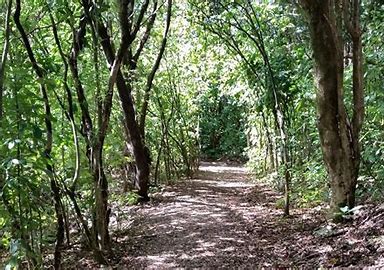Whangarei
17.89°C

Whangarei
17.89°C

Waitakere City
16.98°C

Manukau City
17.11°C

Papakura
24.46°C

Hauraki
17.26°C

Waikato
17.67°C

Matamata
18.46°C

Hamilton
17.51°C

Otorohanga
18.52°C

Rotorua
16.6°C

Taupo
15.44°C

Tauranga
19.27°C

Kawerau
18.6°C

Whakatane
19.64°C

Gisborne
15.51°C

New Plymouth
16.98°C

Stratford
8.97°C

Ruapehu
14°C

Wanganui
17°C

Palmerston North
16.41°C

Wairoa
19.19°C

Hastings
18.84°C

Napier
18.49°C

Masterton
15.49°C

Carterton
15.66°C

Porirua
15.99°C

Lower Hutt
16.45°C

Wellington
15.79°C

Tasman
9.35°C

Nelson
16.27°C

Marlborough
3.22°C

Kaikoura
15.48°C

Christchurch
12.59°C

Ashburton
12.52°C

Timaru
13.37°C

Waitaki
11.32°C

Waimate
13.08°C

Queenstown
12.38°C

Dunedin
14.33°C

Southland
9.98°C

Gore
11.31°C

Invercargill
12.06°C

Blenheim
14.73°C

Te Anau
27.35°C

Wanaka
11.17°C

Kaikoura
13.38°C

Stratford
13.54°C

Upper Hutt
15.9°C

About
There is a loop track through the reserve, which crosses over three small foot bridges and takes between 20-30 minutes to complete. There is also a lookout platform in the reserve, from which there is a good view of Wainui Beach and the surrounding hills. There is a grassy picnic area close to the car park with several picnic tables and plenty of room to spread out. The track is well formed and graded and suitable for all age groups and levels of fitness. The original vegetation in the reserve was a small remnant of modified coastal forest with broad-leaved species and puriri. The main species indigenous to the area would have been kohekohe and puriri, with a number of other plants such as ti kouka, mahoe and ngaio.
The forest remnant was heavily modified. Substantial plantings over the last 20 years have introduced or reintroduced many plant species. Plantings have been made of: whau, mahoe, mapou, koromiko, totara, ti kouka, flax, rewarewa, tanekaha, kawakawa, rangiora, pittosporum and coprosma species, hangehange, ngaio wharangi, kowhai ngutukaka (kaka beak), kowhai, taraire, nikau, kauri and tawapou. Although some of these species such as kauri are not endemic to the Gisborne District, they are thriving, probably due to climatic changes in the area. There are a number of bush bird species that have made their home in the reserve. Those most commonly seen (and hear) are kereru (native wood pigeon) and fantail (piwakawaka), with occasional tui, grey warbler and bellbirds.
The Okitu Scenic Reserve was created in 1974 when a 2.66 ha piece of land, informally know as "Lysnar's Bush", was donated to the Crown by Winifred Frances Lysnar. The land was reserved in memory of her parents W. Douglas and Ada E. Lysnar who were long term residents of the area. At this time the Gisborne branch members of the Royal Forest and Bird Protection Society of New Zealand were appointed managers and guardians of the reserve. Over a number of years members of the Forest and Bird Society cleared away bracken and weeds, planting out some 3,500 plants to vegetate the reserve. They also made tracks and erected a footbridge and picnic table for visitors.
In 1988 the management of the reserve was taken over by the Department of Conservation at the request of the Forest and Bird Society. Since then the Department has continued with the planting programme begun by the Forest and Bird Society, and has also periodically upgraded the fencing and recreational facilities. Many different charity and conservation groups have assisted with the management of the reserve and the maintenance of the facilities over the years, and it is a popular place with visitors and local residents.
